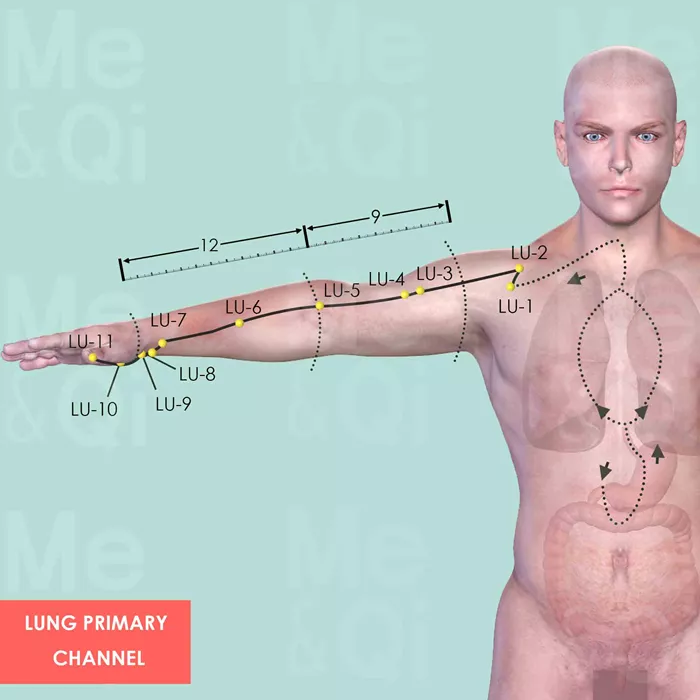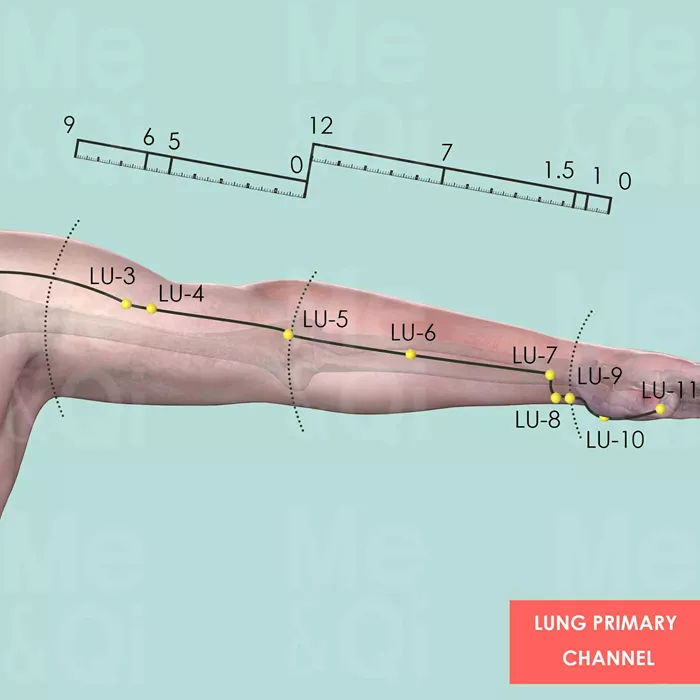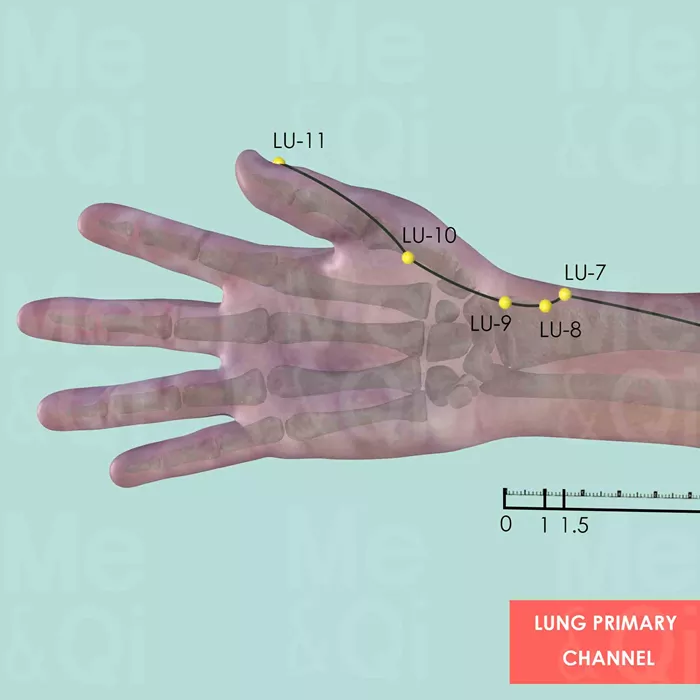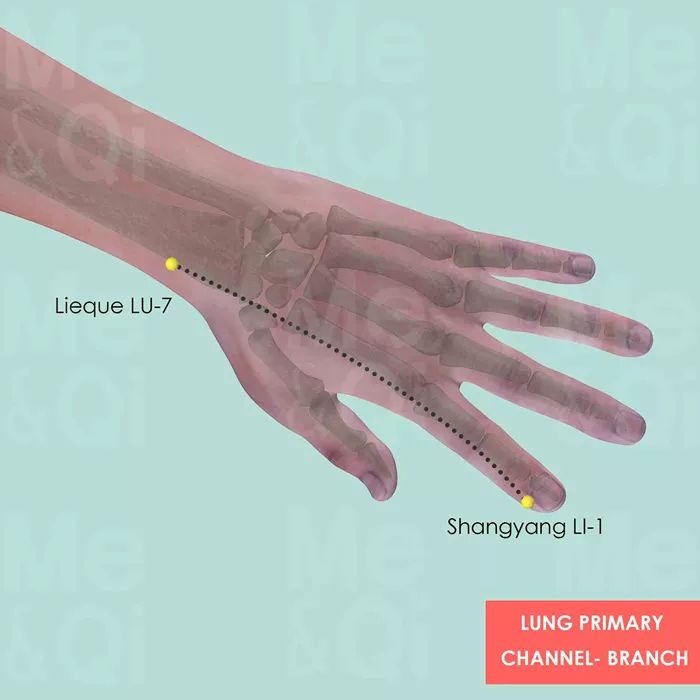Lung Channel
The acupuncture points on the Lung Channel
Lung Primary Channel
Chinese: 手太阴肺经
Pinyin: Shǒu Tài Yīn Fèi Jīng
Pathway for Lung Primary Channel
The internal pathway:
- The Lung Primary Channel of Hand Tai-Yin originates from the Middle-Burner in the region of the Stomach.
- It runs downward to connect with the Large Intestine, its paired Fu Organ.
- Winding back up, it goes along the upper orifice of the Stomach.
- It then passes through the diaphragm.
- It enters the Lungs, its pertaining Zang Organ.
- It then goes up to the throat region.
- Comes down transversally to Zhongfu LU-1 on the lateral thoracic wall at the level of the first intercostal space. This is where the Channel emerges to the surface.
The external pathway:
- From LU-1, the external pathway ascends one rib space to Yunmen LU-2 in the center of the hollow of the delto-pectoral triangle.
- After descending along the medial aspect of the upper arm, it reaches the cubital fossa of the elbow at Chize LU-5.
- It continues downward along the medial aspect of the forearm and arrives at the medial side of the styloid process of the radius above the wrist.
- From there, it follows the lateral border of the radial artery and reaches Taiyuan LU-9 at the wrist.
- It then passes the thenar eminence and goes along the radial side of the thumbnail.
- Finally, the Channel ends at the medial side of the thumbnail at Shaoshang LU-11.
Branches:
- A branch separates from the Primary Channel at Lieque LU-7, which is located at the styloid process of the radius. It runs directly to the radial side of the index finger to its tip where it connects with Shangyang LI-1, of the Large Intestine Channel. This is the hand Yin–Yang connection of the first great circuit.
Lung Divergent Channel
Chinese: 手太阴经别
Pinyin: Shǒu Tài Yīn Jīng Bié
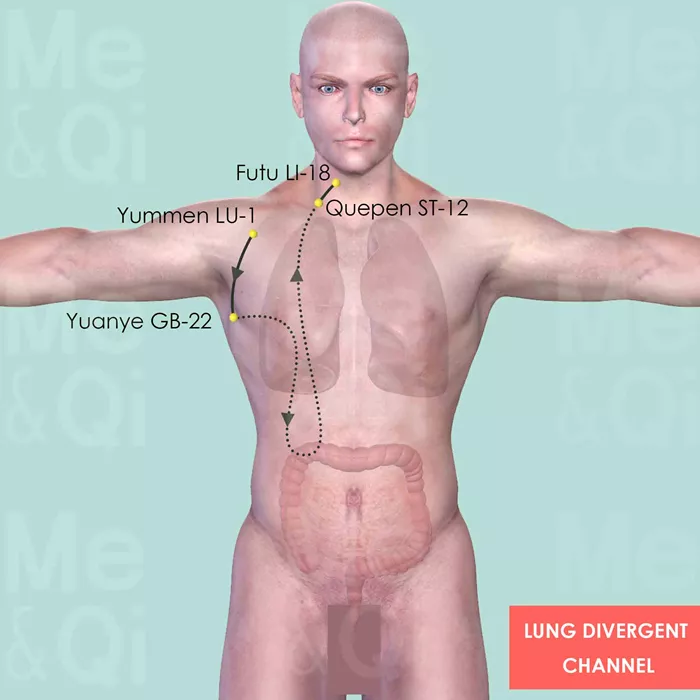
Pathway for Lung Divergent Channel
- The Lung Divergent Channel diverges from the Lung Primary Channel at the axilla.
- It travels down to Yuanye GB-22 on the midaxillary line, 3 cun inferior to the axilla.
- After entering the thoracic region, it disperses in the Lungs, its pertaining Zang Organ and then descends to the Large Intestine, its paired Fu Organ.
- It then ascends again and emerges in the region of the supraclavicular fossa at Quepen ST-12.
- Finally, it traverses the neck in a cranial direction and connects with the Large Intestine Primary Channel at Futu LI-18.
Lung Sinew Channel
Chinese: 手太阴经筋
Pinyin: Shǒu Tàiyīn Jīng Jīn
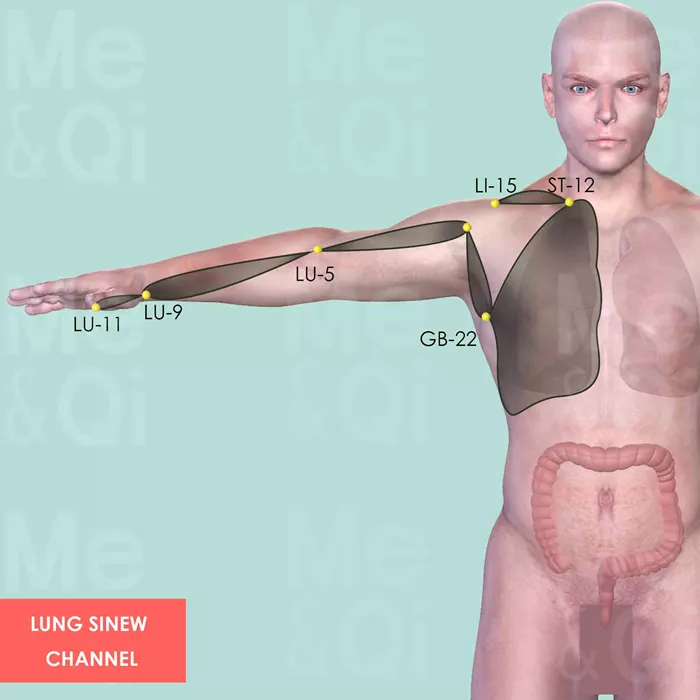
Pathway for Lung Sinew Channel
- The Lung Sinew Channel originates on the thumb at Shaoshang LU-11.
- It then spreads along the radial aspect of the thumb and the 1st metacarpal bone as well as the thenar eminence
- It binds at Taiyuan LU-9 on radial wrist joint space.
- Following the radial pulse and ascending the flexor aspect of the forearm, it binds at the center of the elbow around Chize LU-5.
- It continues upwards along the antero-lateral aspect of the upper arm and binds again at the anterior shoulder region near the acromioclavicular joint.
- It then enters the chest below the axilla and meets the other hand Yin Sinew Channels (Pericardium and Heart Sinew Channel) at Yuanye GB-22.
- Afterwards, the channel emerges in the region of Quepen ST-12 and travels laterally to the shoulder to Jianyu LI-15.
- Finally, it returns to the supraclavicular (Quepen ST-12) region, descends into the chest, spreads over the diaphragm and converges in the region of the floating ribs.
Lung Luo-Connecting Vessel System
Chinese: 手太阴络脉
Pinyin: Shǒu Tài Yīn Luò Mài
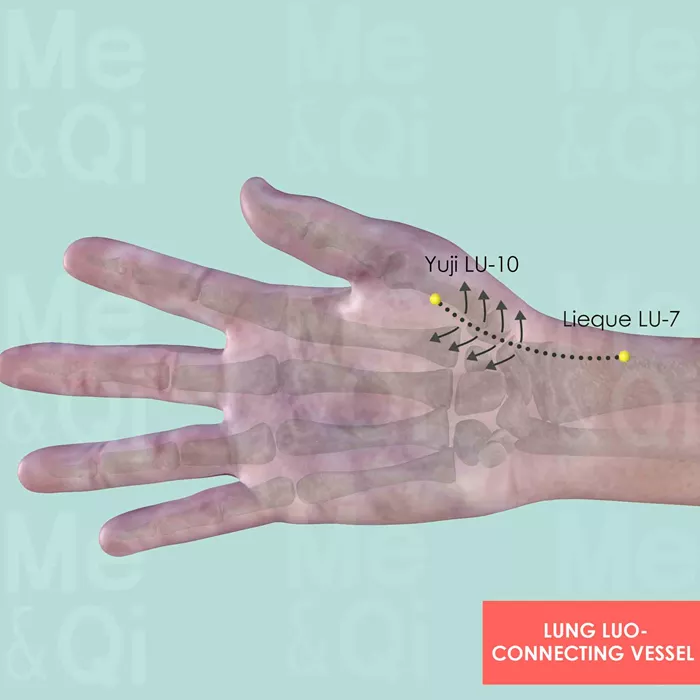
Pathway for Lung Luo-Connecting Vessel System
- The Lung Luo-Connecting Vessel separates from the Lung Primary Channel at Lieque LU-7.
- It then follows the Lung channel into the palm at Yuji LU-10 and and forms a three-dimensional reticular network, dividing into multiple branches and sub-branches.
- It connects with the Large Intestine Primary Channel, which is the Lung channel's Interiorly–Exteriorly pair.

